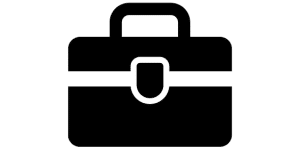Understanding Work-Related Handbag Deductions: Key Requirements and Common Pitfalls
Overview of ATO Provisions for Claiming Handbags and Backpacks as Tax Deductions
Navigating tax deductions can sometimes lead to surprising opportunities.
One such opportunity is the potential for claiming handbags or backpacks as tax-deductible items.
According to the Australian Taxation Office (ATO), you may be able to claim your handbag or backpack as a deduction if it is primarily used for work purposes. However, understanding and complying with the ATO’s specific provisions is crucial.

Why Certain Bags Qualify for Tax Deductions
The key factor determining whether you can claim a handbag or backpack as a tax deduction lies in its primary use.
The ATO allows these deductions if the bag is used predominantly for work-related purposes.
Work-related use includes carrying essential items for your job, such as documents, a laptop, or tools.
The bag must meet specific criteria:
-
💳 Personal Payment: You must have personally funded the purchase of the bag.
-
💼 Work-Related Need: The bag must primarily serve a purpose related to your work.
Bags used equally for work and personal purposes do not qualify under this provision.
Importance of Understanding Deduction Rules for Compliance
Compliance with ATO rules is critical to avoid any penalties or audit risks.
It’s not enough to use the bag for work; it must be primarily used for work.
Documentation supporting this claim, such as keeping receipts and maintaining usage logs, is necessary to validate your deduction.
To ensure that your bag qualifies for a deduction and to avoid any potential pitfalls, follow these guidelines closely and keep meticulous records of how the bag is used.
This approach will not only help you make the most of your entitlements but also ensure that you remain compliant with tax laws.
Stay informed and diligent about the rules governing work-related handbag deductions to optimize your claims.
Essential Eligibility Criteria
Understanding the key eligibility criteria is crucial for claiming a handbag or backpack as a tax deduction.
Let’s delve into the specific requirements set by the ATO.
Personal Payment Requirement
First and foremost, to claim a handbag or backpack as a deduction, you must have paid for it yourself.
If your employer has reimbursed you for the purchase or provided the bag, it is not eligible for a tax deduction.
Keeping evidence of the purchase like receipts or bank statements is essential to validate your claim.
Work-Related Use Must Exceed 50%
The ATO stipulates that for a handbag or backpack to qualify, it must be used predominantly for work purposes—more than 50% of the time.
This means the primary reason for having the bag should be to carry work-related items such as documents, a laptop, or tools.
If you use the bag equally for personal and work purposes, it does not meet the criteria.
Specific Documentation Requirements
Proper documentation is vital for a valid claim. You need to maintain:
-
🧾 Receipts or invoices showing the purchase details.
-
📚 Detailed logs showing how often the bag is used for work versus personal activities. This can be in the form of a simple diary entry or digital notes.
-
📑 Evidence supporting the work-related need for the bag, such as job descriptions or notes tying the bag’s use to specific work tasks.
Documentation ensures your claim is supported if the ATO requests verification.
Understanding these criteria ensures your claim is legitimate and compliant with ATO guidelines.
Always make sure your bag’s primary use is work-related and keep thorough documentation to back up your claim. This vigilance protects you from audit risks and helps leverage eligible tax benefits.
Understanding Work vs Personal Use
Legitimate Work-Related Usage Scenarios
Determining legitimate work-related usage is crucial for claiming handbag deductions.
Bags used to carry essential work items qualify as work-related. Examples include carrying laptops, documents, or tools necessary for your job. If your bag is primarily used to transport these items, it can qualify as a work-related expense.
Differentiating Between Personal and Work-Related Items
Ensuring the items within your bag are work-related is essential. Personal items like gym clothes or makeup do not count as work-related. Items like client documents, work tools, or a laptop are considered work-related.
When a bag is used for both personal and work-related purposes, you need to keep clear records reflecting both usages. For instance, if a bag is used 60% for work and 40% for personal use, only the 60% work-related portion can be claimed.
Importance of Maintaining Usage Logs and Documentation
To validate your claim, detailed documentation is essential. A simple log or notes on your phone can record how often you use the bag for work versus personal purposes. This documentation should be maintained consistently to avoid complications during tax filing.
Keeping comprehensive records such as receipts, invoices, and usage logs will substantiate your work-related claims, ensuring compliance and reducing the risk of an audit. By maintaining accurate records, you can confidently claim deductions knowing you have the evidence to back them up.
A thorough understanding of what qualifies as work-related use and vigilant record-keeping are key to optimizing your deduction claims. This authentic approach ensures compliance while maximizing benefits, making tax season a lot less stressful.
Claiming Process Based on Purchase Price
Rules for Immediate Deductions on Items Under $300
When it comes to claiming a tax deduction for work-related handbags or backpacks, the purchase price plays a significant role. If you purchase a bag that costs $300 or less, you can claim an immediate deduction for the full amount.
This means you don’t have to depreciate the cost over several years, simplifying the process and allowing you to benefit from the deduction in the current tax year.
Depreciation Requirements for Items Over $300
For bags that cost more than $300, the deduction process becomes a bit more complex. Instead of claiming the full amount upfront, you need to depreciate the bag over its useful life.
Depreciation is a method that allows you to spread the cost of the bag over several years, reflecting the item’s declining value over time. The amount you can claim each year will depend on the percentage of time the bag is used for work-related purposes.
How to Calculate Partial Work-Related Usage Claims
If your handbag or backpack is used for both work and personal purposes, you need to apportion the claim based on the percentage of time the bag is used for work.
For instance, if you use the bag 70% of the time for work, you can only claim 70% of the purchase price or depreciation amount.
This requires you to maintain accurate usage logs, documenting how often and in what context the bag is used. Keeping detailed records is essential to substantiate your claim and ensure it holds up under scrutiny by the ATO.
Understanding the process of claiming deductions based on the purchase price of your bag is crucial for compliance and maximizing your allowable deductions. Knowing these rules will help you navigate the deduction landscape efficiently.
Record-Keeping Requirements
Keeping accurate records is paramount for successfully claiming tax deductions on handbags or backpacks used for work purposes.
This section focuses on the essential documentation needed to support your claims, how to maintain proper usage logs, and the importance of keeping receipts and purchase evidence.
Essential Documentation Needed to Support Claims
When claiming a tax deduction for a handbag or backpack, the Australian Taxation Office (ATO) requires specific documentation to substantiate your claims.
The necessary documents include:
-
🧾 Receipts or Invoices: These should clearly state the purchase details, including the cost of the bag, the date of purchase, and a description of the item.
-
🏦 Bank Transaction Records: While not a substitute for receipts, these records can support the proof of purchase. They should be used in conjunction with receipts.
How to Maintain Proper Usage Logs and Records
To demonstrate that your handbag or backpack is used primarily for work, you should keep detailed usage logs.
Here’s how to do it effectively:
-
📅 Daily Logs: Create a daily log noting how often the bag is used for work-related tasks compared to personal use. This can be maintained in a physical journal, a spreadsheet, or a note on your phone or computer.
-
📋 Categorized Items: List the items carried in the bag and designate them as work-related or personal. For example, carrying a laptop and client documents qualifies as work-related, whereas gym clothes and snacks do not.
Proper documentation and usage logs will help in accurately calculating the portion of the bag’s use that is work-related.
This is crucial for supporting your tax deduction claims and ensuring compliance with the ATO guidelines.
Importance of Keeping Receipts and Purchase Evidence
Retaining receipts and purchase evidence is crucial for several reasons:
| 🔍 Action | 📋 Description |
|---|---|
| 📑 Audit Preparedness | Maintain comprehensive records to substantiate claims and avoid penalties during an audit. |
| 💼 Depreciation Calculation | For assets like bags costing over $300, maintain detailed records to accurately calculate depreciation based on work-related usage. |
Ensuring you maintain all receipts, invoices, and usage logs can make the tax deduction process smoother and more efficient. By diligently keeping these records, you can confidently support your claims and stay in compliance with tax regulations.
Common Misconceptions and Pitfalls
When it comes to claiming tax deductions for work-related handbags and backpacks, misinterpretations and mistakes are common.
Understanding what qualifies as a deductible item, how to differentiate work from personal use, and avoiding common pitfalls are crucial for compliance and maximizing your deductions.
Why Not All Work-Used Bags Qualify for Deductions
Not every bag used for work purposes is eligible for a tax deduction.
The bag must be used predominantly (over 50% of the time) for work-related activities to qualify.
Common misconceptions include assuming any bag that is occasionally used for work can be deducted. However, ATO guidelines are clear that only bags primarily utilized for work qualify.
Clarifying Combined Personal and Work Usage Claims
It’s important to note that bags used for both work and personal purposes must be carefully accounted for.
If usage logs show that a bag is used equally for work and personal activities, the ATO may deem it ineligible for a full deduction.
Only the work-related portion of the bag’s use can be claimed. For example, if your bag is utilized for carrying both work-related documents and personal items, only the time spent carrying work-related items counts.
Typical Mistakes to Avoid When Claiming Bag Deductions
Several common mistakes can derail your tax deduction claims:
-
❌ Insufficient Documentation: Ensure that you have detailed receipts, invoices, and usage logs. Lack of proper documentation is a primary reason for claim rejections.
-
🚫 Ignoring the 50% Rule: Remember that your bag must be used over 50% for work-related activities. Failing to meet this criterion will invalidate your claim.
-
⚠️ Confusing Work with Personal Use: Carrying personal items like gym clothes in the same bag used for work can complicate your claim. Maintain a clear distinction.
By understanding these common misconceptions and pitfalls, you can better navigate the complexities of work-related handbag deductions and ensure proper compliance.
Transitioning briefly, the next section will delve deeper into best practices for maintaining documentation and ensuring compliance with ATO guidelines.
Maximizing Your Claim Legitimately
Claiming a tax deduction for a work-related handbag or backpack can seem daunting, but it doesn’t have to be.
Following best practices ensures your deduction is both legitimate and optimized.
Let’s break down some strategies for maintaining proper documentation, complying with ATO guidelines, and when you might want to seek professional tax advice.
Best Practices for Maintaining Proper Documentation
Proper documentation is the cornerstone of a successful tax claim.
Without it, you risk your claim being rejected, or worse, triggering an audit.
Here’s how to keep things on track:
-
🧾 Receipts and Invoices: Always keep the original receipt or invoice for your purchase. It should clearly state the cost of the bag, the date of purchase, and an accurate description of the item.
-
🏦 Bank Transaction Records: While these can support your claim, they should not be the sole form of evidence. Always pair them with actual receipts or invoices.
-
📓 Usage Logs: Maintain a detailed log of how often the bag is used for work versus personal use. This could be a simple note on your phone or an entry in a digital calendar. Consistent records help prove the work-related usage exceeds 50%.
Tips for Ensuring Compliance with ATO Guidelines
Adhering to ATO guidelines is crucial to avoid any trouble.
Here are some tips to stay compliant:
-
💼 Understand Work-Related Usage: Ensure that the bag is primarily used to carry work-related items like documents or tools, not personal items.
-
📉 Depreciation Calculations: For items over $300, accurately calculate and claim depreciation based on the proportion of work-related use. This ensures your claims are precise and justified.
-
🧳 Separation of Claims: If your bag is used for multiple jobs, only claim the proportion of time it is used for work duties in the income-generating job.
When to Seek Professional Tax Advice
Sometimes, consulting a professional can save you time and ensure your claims are accurate:
-
🧑💼 Complex Scenarios: If you switch between multiple jobs and use the same bag, a tax professional can help you navigate the complexities.
-
❓ Uncertainty in Claims: If you’re unsure whether your bag qualifies, it’s better to check with a professional than risk making an incorrect claim.
-
🔍 Handling Audits: If you’ve been flagged for an audit, having a tax advisor can help you prepare and provide the necessary evidence.
By following these best practices and tips, you can confidently claim your work-related handbag or backpack without running afoul of the ATO. Ensure all your documentation is in order and seek professional advice when needed, to make the claim process smooth and compliant.






